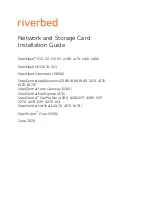
TM8100 Mobile Radio
Service Manual
General Description
59
May 2004 © Tait Electronics Limited
Operation of
Control Loop
The RF PLL is a conventional integer-N design with frequency
resolution of 25 Hz. In transmit mode the loop locks to the transmit
frequency, whereas in receive mode it locks to the receive frequency
minus the first IF frequency.
Initially, the VCO generates an unregulated frequency in the required
range. This is fed to the PLL device (ADF4111) and divided down by a
programmed ratio to approximately 25 kHz. The reference frequency
input from the FCL is also divided down to approximately 25 kHz. The
phase of the two signals is compared and the error translated into a DC
voltage by a programmable charge pump and dual-bandwidth loop filter.
This DC signal is used to control the VCO frequency and reduce the
initial error. The loop eventually settles to a point that minimises the
phase error between divided-down reference and VCO frequencies.
The net result is that the loop “locks” to a programmed multiple of the
reference frequency.
The FCL generates an output of 13.012 ± 0.004 MHz. Initially a
VCXO produces a quasi-regulated frequency in the required range. The
VCXO output is fed to a mixer where it is mixed with the 13.000 MHz
TCXO frequency. The mixer, after low-pass filtering to remove
unwanted products, produces a nominal frequency of 12 kHz. This is
converted to digital form and transported to the frequency-control block
in custom logic.
The frequency-control block compares the mixer output frequency with
a reference generated by the digital clock, and creates a DC error signal.
A programmed offset is also added. This error signal is converted to
analogue form and used to control the VCXO frequency and reduce the
initial error. Once settled, the loop “locks” to the TCXO frequency
with a programmed offset frequency. The FCL output therefore acquires
the TCXO’s frequency stability.
Modulation
The full bandwidth modulation signal is obtained from the DSP in digital
form at a sample rate of 48 kHz. In traditional dual-point modulation
systems the modulation is applied, in analogue form, to both the
frequency reference and the VCO in the RF PLL, combining to produce
a flat modulation response down to DC. Reference modulation is
usually applied directly to the TCXO.
In the system employed in the TM8100 radio, the frequency reference is
generated by the FCL, which itself requires dual-point modulation
injection to allow modulation down to DC. With another modulation
point required in the RF PLL, this system therefore requires triple-point
modulation. The modulation signals applied to the FCL are in digital
form, whereas for the RF PLL (VCO) the modulation signal is applied
in analogue form. The modulation cross-over points occur at
approximately 30 and 300 Hz as determined by the closed loop
bandwidths of the FCL and RF PLL respectively.
Summary of Contents for TM8000 Series
Page 32: ...32 Introduction TM8100 Mobile Radio Service Manual May 2004 Tait Electronics Limited ...
Page 78: ...78 Circuit Descriptions TM8100 Mobile Radio Service Manual May 2004 Tait Electronics Limited ...
Page 106: ...106 General Information TM8100 Mobile Radio Service Manual May 2004 Tait Electronics Limited ...
Page 124: ...124 Servicing Procedure TM8100 Mobile Radio Service Manual May 2004 Tait Electronics Limited ...















































